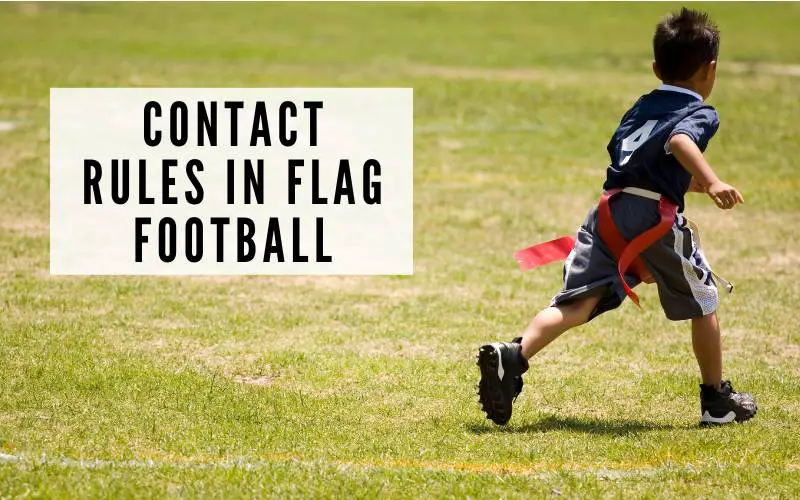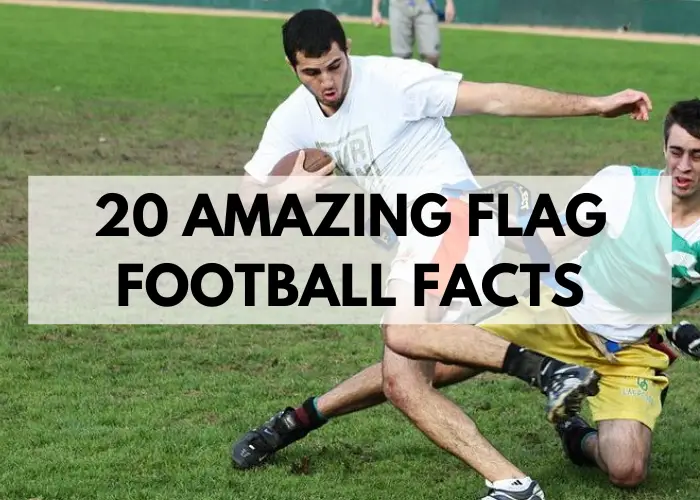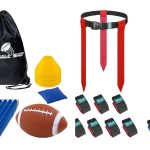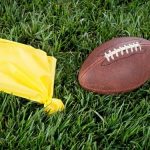Flag football is one of the fastest-growing sports in the U.S. and some other parts of the world. It combines speedy athletic moves with teamwork and safety, and it’s a perfect choice for parents looking to introduce their kids to the sport.
Unlike tackle football, the number one rule of flag football is no contact. This means no blocking, tackling, or tripping.
This keeps players safe while still learning to play the game of football that they see on TV during fall weekends.
Contact Rules
The contact rules in flag football vary by league. Some leagues have more lenient rules than others, and some even allow offensive linemen to block.
Typically, these rules differ from tackle football to prevent power football in tight spaces.
In most flag football youth and adult leagues, defensive players are not allowed to push, hold, or knock down an opponent carrying the ball in an attempt to remove their flag. Similarly, offensive players cannot hold, block, stiff arm, or blast through a defensive opponent attempting to remove their belt.
As a way to further cut down on contact, many leagues implement no-run zones that are located five yards before the end zone. This rule requires offenses to pass the ball to get a touchdown and lessens body traffic that comes with running plays.
In addition, the rules for defensive pass interference are much stricter in flag football. If a player makes noteworthy contact with the receiver, it can be considered defensive pass interference.
Learn about other field rules.
Can You Tackle in Flag Football?
One of the game’s most important rules is the rule about no contact. That means no pushing or tackling.
This is exemplified by the fact that players must wear belts with two flags hanging from them.
In traditional American football, players tackle other players, which can lead to injuries like broken bones, sprains, strains, concussions, and abrasions. In flag football, tackling is not allowed because the game focuses on safety and no contact is involved.
However, some positions require being stopped when they have the ball, including running backs and wide receivers. These positions usually wear a belt with two flags hanging at their hips. To stop a play, a defensive player must pull one or both of these flags off their opponent’s belt.
Offensive linemen don’t typically wear a flag belt, but they may if the position requires it. This is because they are responsible for protecting the quarterback and buying him/her more time to find open players.
Can you block or screen in Flag Football?
Unlike in tackle, blockers in flag football use quick footwork and lateral movements to disrupt the path of the defensive player. Their hands are up and their palms are open – arms can’t be crossed or fully extended.
While blocking in flag football isn’t as common as it is in tackle, it can happen. Whether or not it’s legal to block depends on the league and the rules of the specific flag football competition.
Some offensive players will screen like in basketball, which is a type of blocking that involves an offensive player standing still with their hands to their sides and simply getting in the way of a defender without initiating contact. This is legal as long as the blocker doesn’t force contact with the defensive player during screening.
If the screening player initiates any kind of contact with their hands, body, arms, elbows or legs, a penalty shall be called.
Flag football contact penalties
The following contact penalties may be called by officials:
- Illegal screening and blocking where the blocker initiates contact
- Defensive and offensive pass interference where the defensive back or wide receiver pushes to make a play on the ball
- Roughing the passer when a rushing defender contacts the quarterback
- Defensive holding when a defender holds a ball carrier in an attempt to pull their flag
- Tripping to stop a ball carrier
- Offensive charging when a ball carrier initiates contact and runs through a defender to in their path
Read more about flag football penalties and what not to do on the field.
Equipment to prevent injuries
To reduce the chances of getting hurt while playing flag football, some players may opt to wear gloves, soft shell helmets, mouthguards, and/or knee and elbow pads.
Most leagues require participants to wear closed-toed athletic sneakers or rubber cleats. Metal cleats are usually not allowed in games or practices.
It is also suggested that players not wear jewelry, hard-billed baseball caps, or other accessories that may harm themselves or others while playing.
Bottom line
Like any sport that includes players running and moving at fast paces, flag football is not immune to contact from time to time.
Most occurrences of contact happen simply by accident. Yet, when a player intentionally contacts another, they will be penalized. If the contact is egregious or consistently occurs with the same player, he or she will be ejected from the game.
Flag football is an excellent way for kids to get some healthy exercise and have fun while doing it. It also helps them to learn and develop a work ethic that lasts a lifetime.
When it comes to tackling or pushing, the rules for this sport are designed to keep kids safe and have fun. Because of this both boys and girls can sign up for a league and start learning the game.
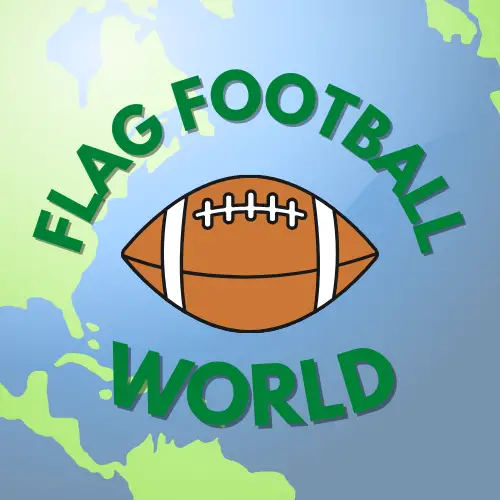
Vance J has played flag football since he was a boy. Since then, he has become a coach and a huge advocate for growing the sport. He loves to write and talk about flag football!

